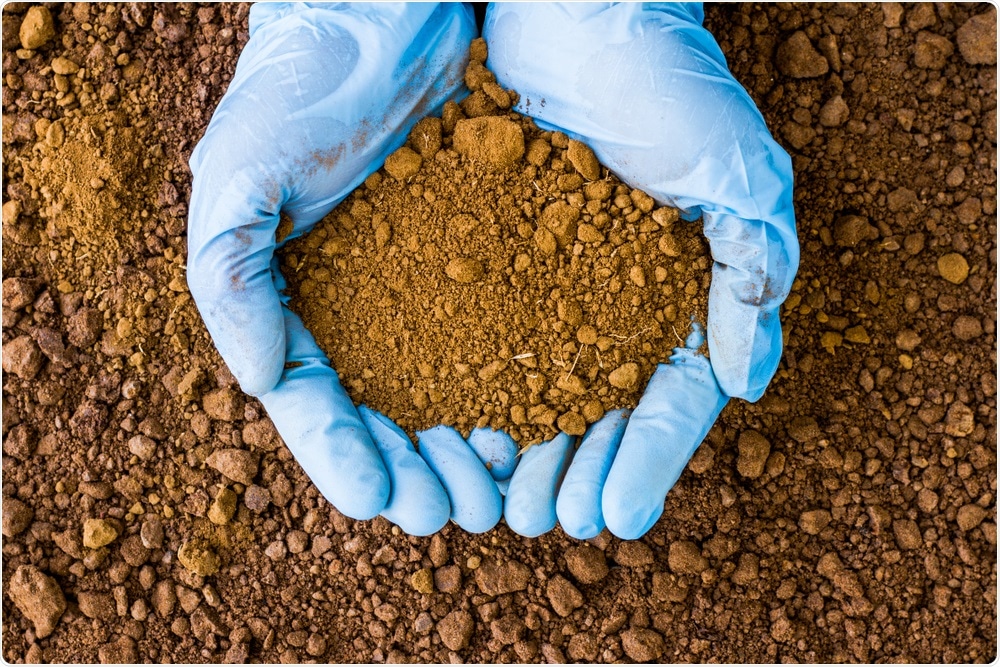A study conducted by researchers at the College of Natural Resources, University of Idaho found little difference in the impact on soil quality between the management of poplar bioenergy crops and conventional agricultural management.

Image Credit: Anon Kulsuwan/Shutterstock.com
Atanu Mukherjee and Mark Coleman from the college’s Department of Forest, Rangeland, and Fire Sciences, had hypothesized that the management of poplar bioenergy crops would have a positive impact on soil quality, compared with agricultural management.
However, their analysis of soil processes at poplar sites versus agricultural sites at locations in the northwestern United States over four years showed that poplar management had no significant beneficial effect on soil nutrients.
The researchers say that although it cannot be concluded from this four-year study whether conversion of agricultural sites to poplar sites would have any impact on soil chemical quality, it can take decades for changes in these chemical features to manifest and the longer-term effects of poplar management may need to be considered.
Concerns surround the use of woody bioenergy crops
Woody bioenergy crops such as poplar and willow represent potentially sustainable alternative energy sources in regions of the globe with temperate climates. However, concerns remain about the effects that conversion of agricultural systems to woody bioenergy systems may have on ecological aspects such as soil and water quality, carbon storage and the emission of greenhouse gases.
The team hypothesized that conversion to poplar coppice would have an overall relative positive impact on the quality of soil by increasing its carbon content, reducing its levels of extractable nitrogen and phosphorus and lowering its pH.
The hypotheses explained
They thought the organic carbon content might increase due to more yearly litterfall, faster turnover of fine roots and the decomposition of thicker roots during cutting cycles.
They also expected that no fertilizer used, poplar growth and harvest removal would result in decreased levels of extractable nitrogen and phosphorus. The authors say that given the general agreement that soil pH level eventually decreases in woody bioenergy crop systems, they had also expected to see a fall in soil pH.
As recently reported in the journal Communications in Soil Science and Plant Analysis, the team tested their predictions by measuring changes in chemical soil quality parameters at poplar sites and nearby agricultural sites across four locations in northwestern states, namely Clarksburg, California; Hayden, Idaho; Jefferson, Oregon: and Stanwood, Washington.
What did the team find?
The authors report that while poplar bioenergy crops did not negatively impact soil chemical quality, few changes were seen in the variables measured over the four-year observational period.
There were no indications that poplar systems increased levels of organic carbon, particularly once the type of forest management were excluded from the analysis.
Random sampling locations in forest management ranged from largely mineral to mainly organic, which differed from relatively uniform organic content in other management types…Excluding forest management from the statistical analysis revealed that soil OM in poplar did not change relative to agricultural management.”
Although they did observe a significant decrease in the level of extractable nitrogen, this was also seen at agricultural sites and once results were averaged across all locations, there was no evidence of a reduction in extractable nitrogen with poplar management.
The level of extractable phosphorous was also unaltered by poplar management.
The team’s third hypothesis was also contradicted and no changes in soil pH between poplar and agricultural management were observed.
The team concludes that poplar management had little effect on soil nutrients throughout this study and that an overall positive impact on the quality of soil chemistry compared with agricultural management cannot yet be assumed.
However, changes in fundamental soil chemical properties can take many years to manifest under poplar and other forest management systems, say the researchers.
“Consequently, it is necessary also to consider the longer-term impacts of poplar management on soil chemical quality,” they conclude.
Journal reference:
Mukherjee A and Coleman M. Converting Conventional Agriculture to Poplar Bioenergy Crops: Soil Chemistry. Communications in Soil Science and Plant Analysis 2020;51(3): p364 - 379 https://doi.org/10.1080/00103624.2019.1709485